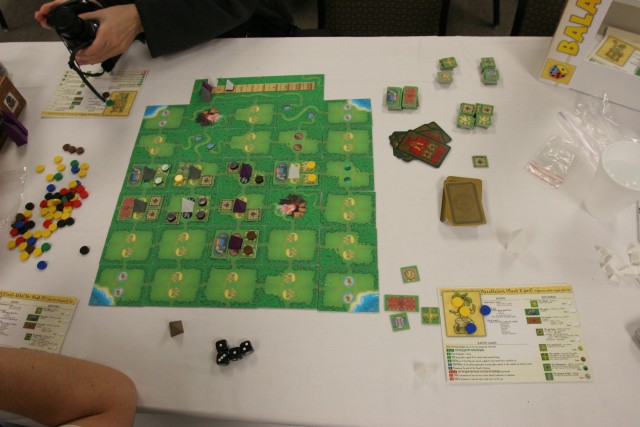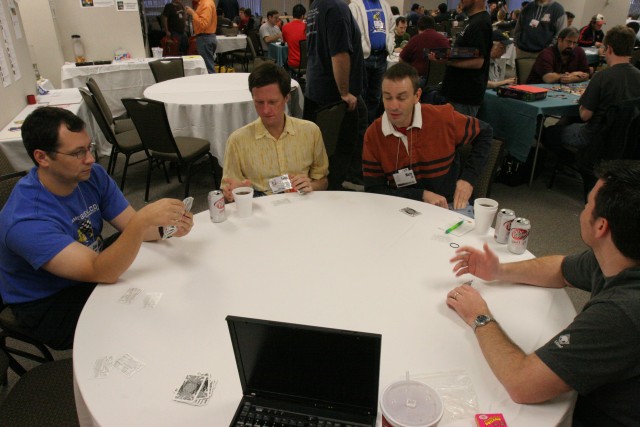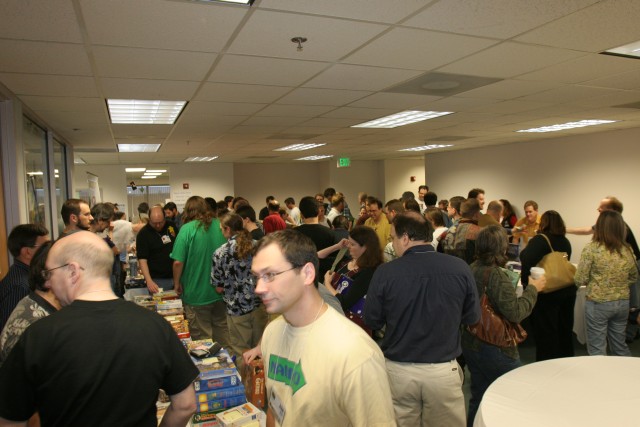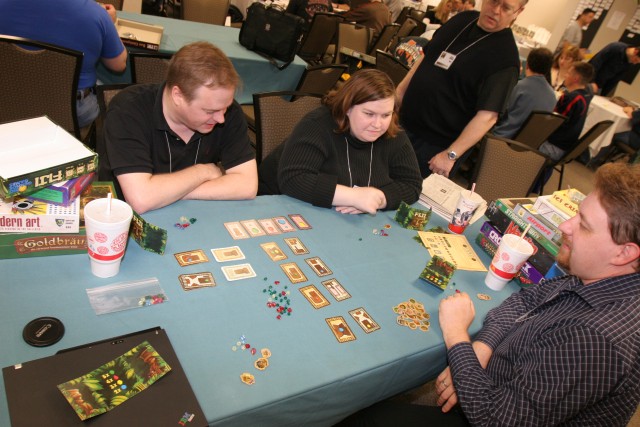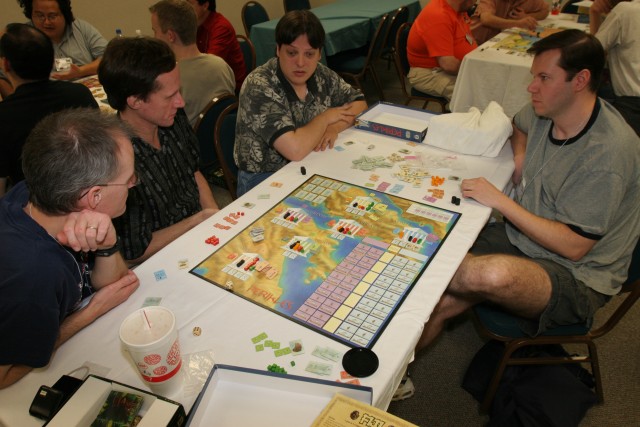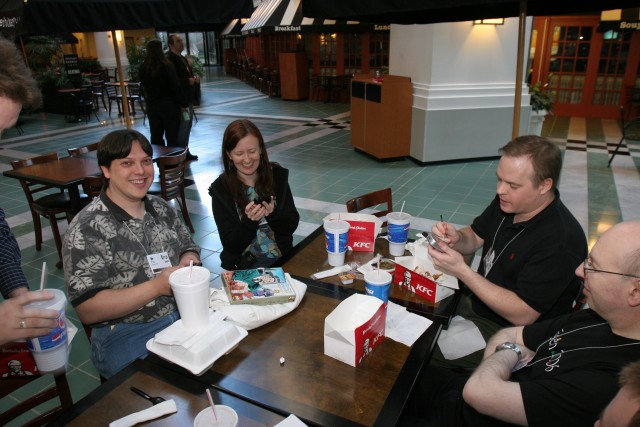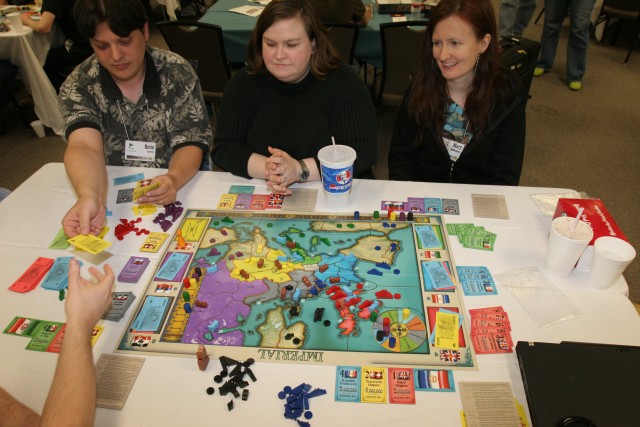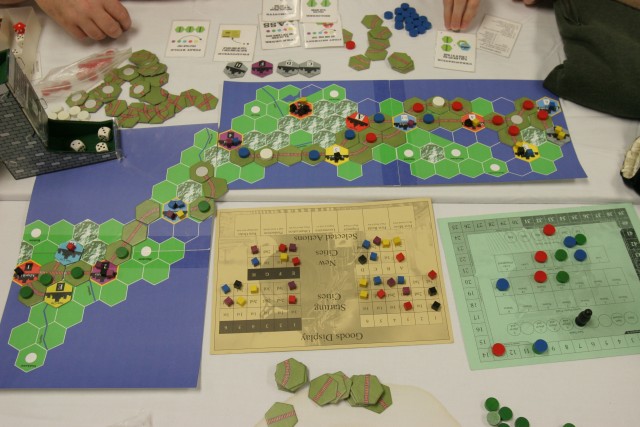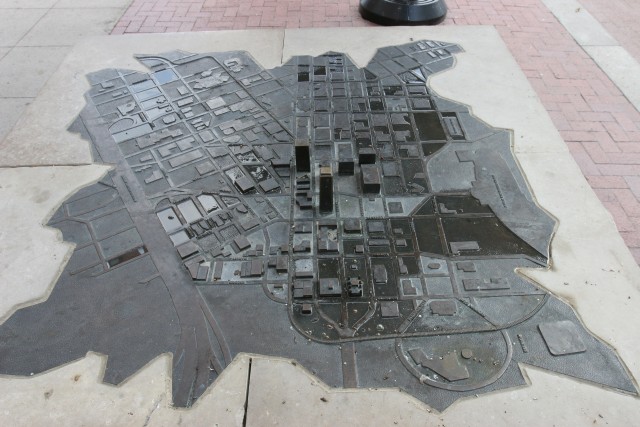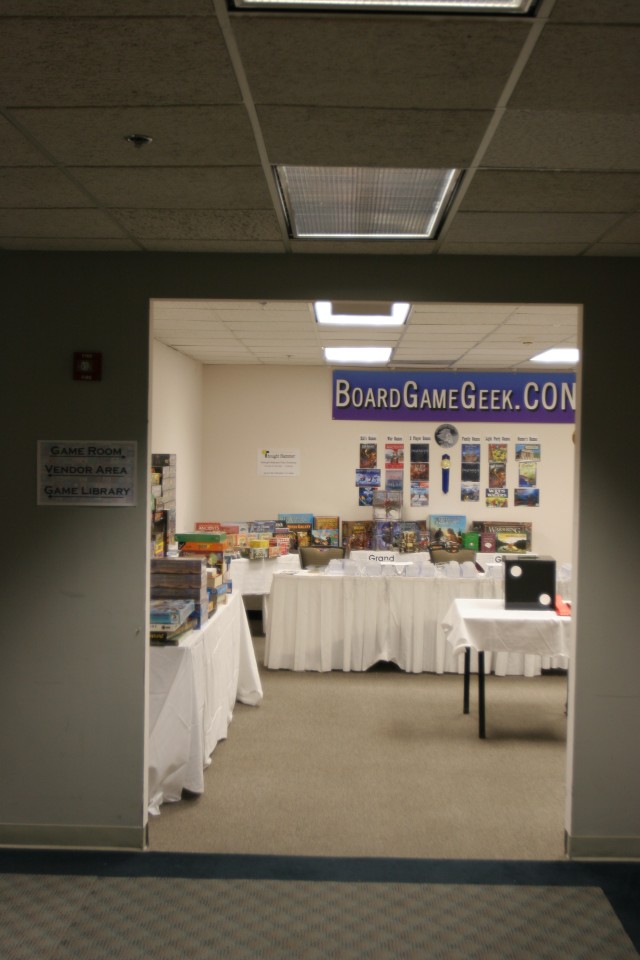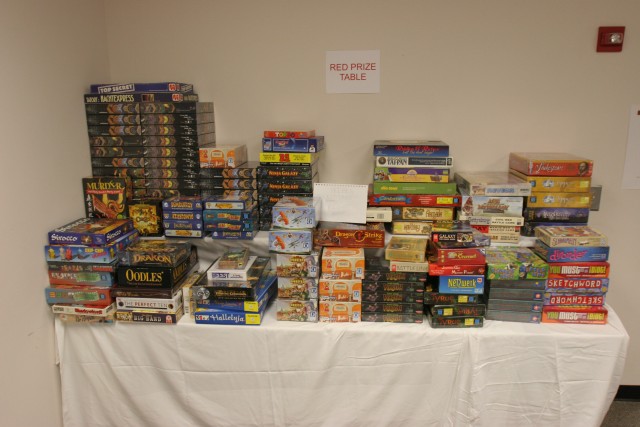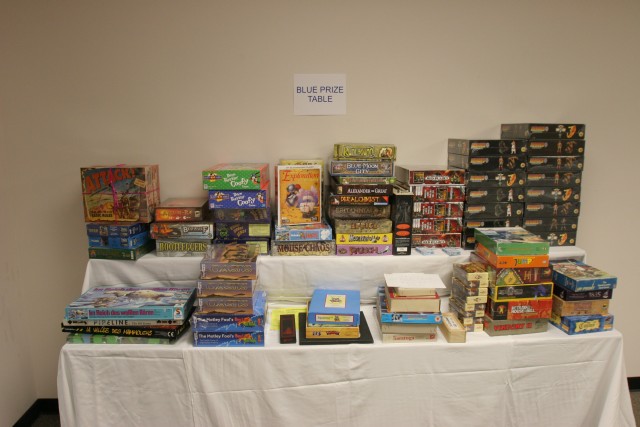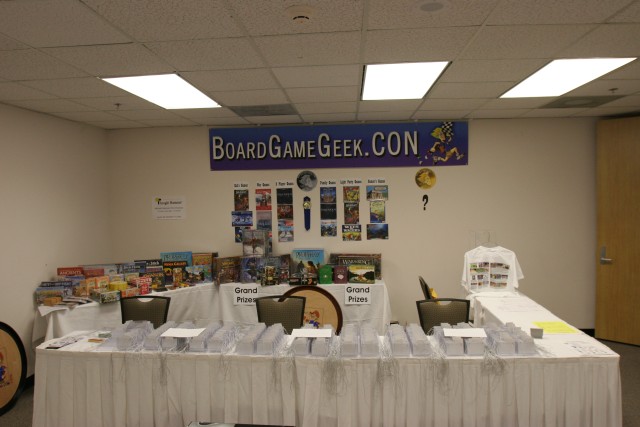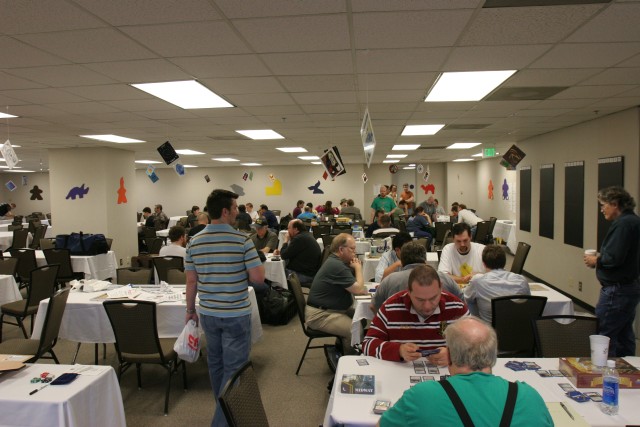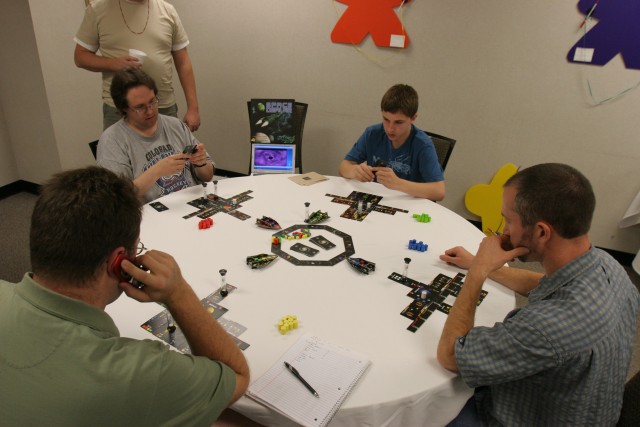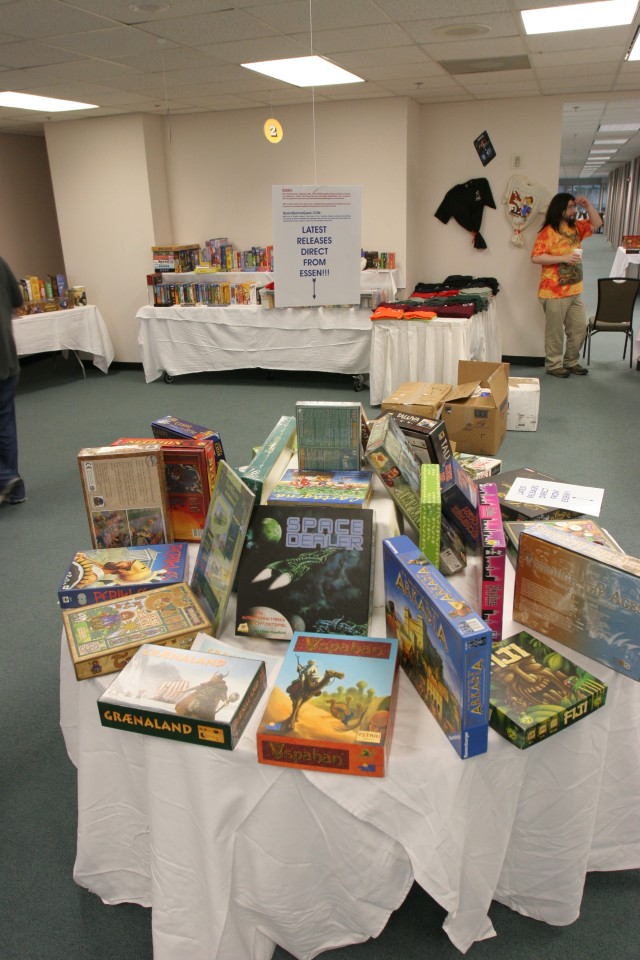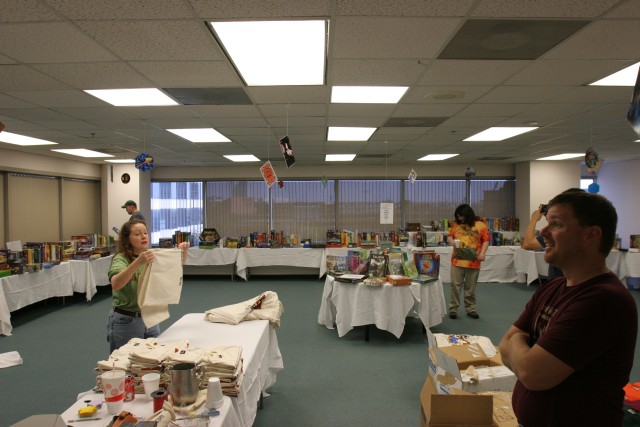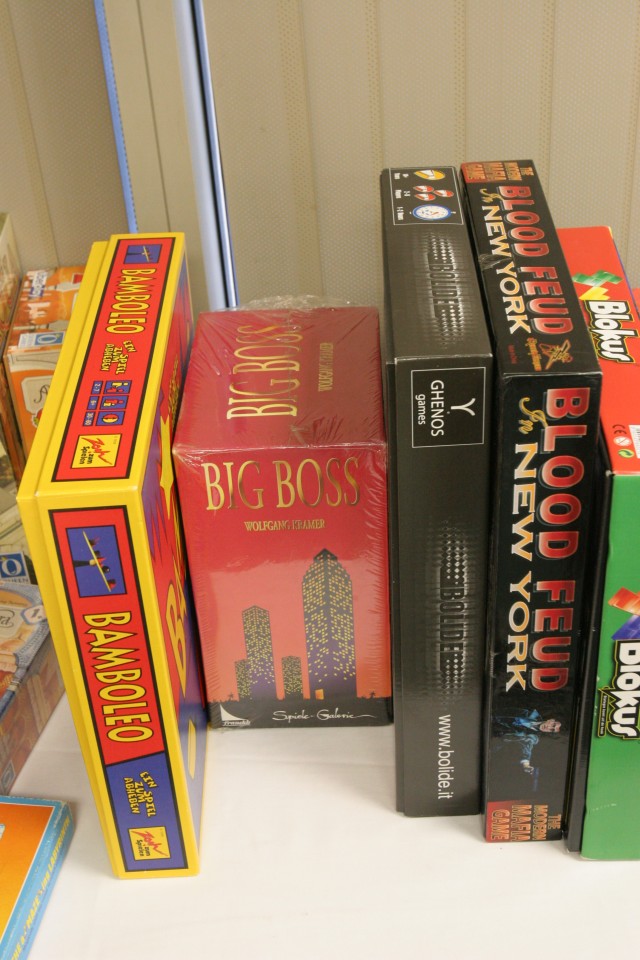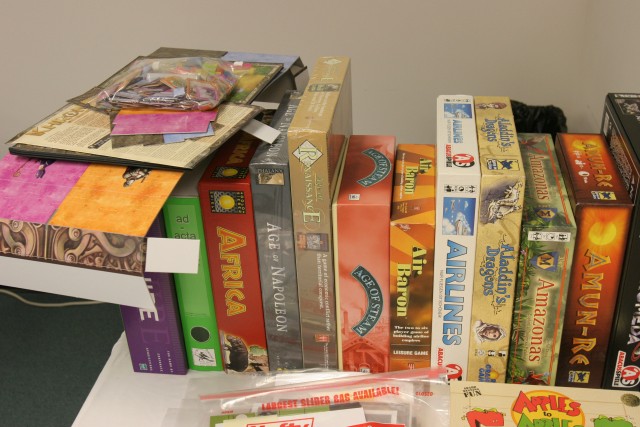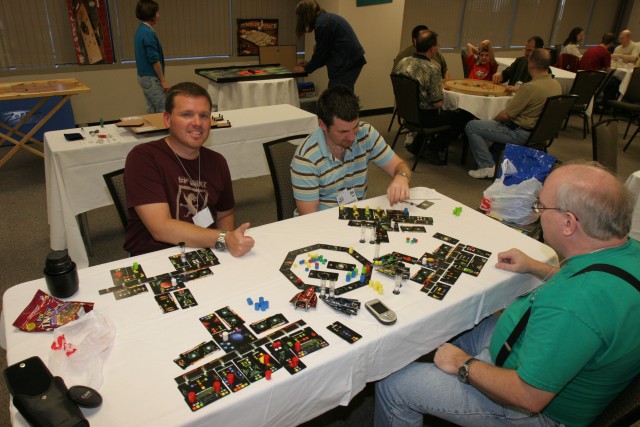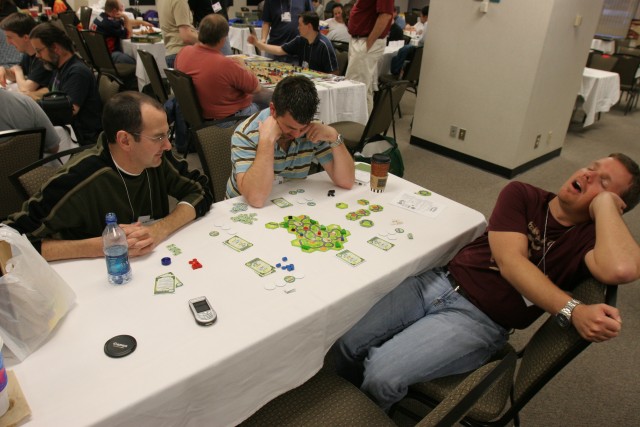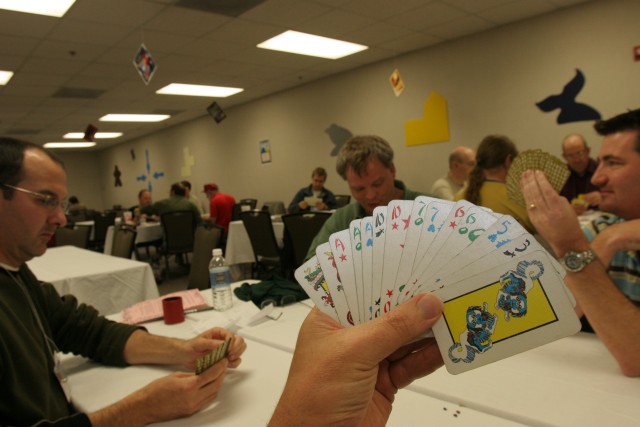Jon and I drove up to Dallas this morning at 7 am. We stopped at Rudy’s for
some breakfast tacos and geeked out on the ride up. We arrived in Dallas at
10:30. So we wandered around town for a bit. Wouldn’t this make a great
spot for a game of Big City?
There it is, the Plaza of the Americas! The building that holds the convention.
It is a pretty nice architecture. A giant enclosed area gives a feeling of
spaciousness. See the skyway that allows travel from the Adam’s Mark to the
Plaza? Who needs to go out in the real world now?
Here it is…the tunnel into goodness…
The Red Prize tables
The Blue Prize table
Badges
People are playing before the registration even…
Oooo… Space Dealer…
New games from Essen (front)
New games from Essen (back)
The game library is in a new and bigger room.
The rare game, Big Boss, is sitting there in shrink!
And Age of Renaissance is there also in shrink!
Space Dealer
This is one of the new Eggert-Spiele games that I have been dying to try.
It is a 30 minute game with two one-minute sandtimers that perform actions
for you. You use them to produce goods, move your ship to transport goods
to other player’s locations (dropping them off for victory points), building
on to your space station, research new technology, or mining goods (generally
causing modules to function). Each card that you build has a one-time demand
of goods. When the matching goods are delivered by another person, they place
their marker on your building and they will score victory points. Usually,
you score lesser victory points as well. So it is in your best interest to
build building cards to lure people to your space station. One thing to keep
in mind is that the modules must be powered in order to function. So, it is
critical to upgrade your generators from level 1 (powering two spots) to
level 3 (powering four spots). Ships move around a round track which also
serves as the score track. There is each of the individual player’s planet
seperated by a neutral planet. For example, to move to my right hand player’s
space station, I need to spend one action to move right and arrive at a
neutral planet, spend another action to move to the next planet. Then, you
can drop off the goods to fufill victory points. It costs you nothing to
teleport back to your home planet, but you loose any undelivered goods.
The game is short, tense, and deviod of waiting on other people to
calculate their turns. You spend most of your short downtime planning
future moves. And you definately want to keep track on what other people
are mining to see if they can deliver their goods before you can.
This game is off to a great start. Now will it be a lasting game and
have enough staying power to keep it fresh and interesting? Only the sands
of time will tell…
Green Town
Mike brought us another new Essen game to try. One made by the Bambus
Spieleverlag company. I definately recognized the green box from an
earlier game of theirs: Kanaloa.
It billed itself as a 45-60 minute game. The rules were not that difficult
to figure out from the translation (there was one hiccup of determining the
order of player actions).
This game is about performing tours of the country side for victory points.
You are either building up the country side or holding a tour. At the start
of the game you can choose one of four actions: 1) tour, 2) build,
3) build OR tour, 4) build AND tour. Once you have performed an action,
you flip that marker face down (taking it out of your possible choices), and
play passes to the left. When the last player has played, they move a
“x2” marker to the person on their right and perform one extra turn. This
process continues until everyone uses all of their actions. Then, the actions
are flipped back to face up and everything repeats.
Players have one tour card in front of them. This is the goal that they are
trying to fulfil. It has the length of the hex spots that must be crossed
and the numbers of things that people want to see. These can be nature areas (trees),
culture spots (houses), sports locations (circles), and/or shopping locations
(cubes). The cards also tell you the minimum and maximum possible numbers
of each of spots. For example, you might have to perform a tour over nine
hexes that must visit at least one nature area (with a maximum of three),
two culture spots, one sports location (with a maximum of two), and one
shopping area (with a maximum of three). For each of your own buildings and
nature areas that you visit, you get a buck (a victory point). Other people’s
building pay the corresponding person. And if you do not meet the critera
of the tour, you loose dollars for each thing that was missed.
This game was simple in concept. But our group turned it into a real brain
burner. The game lasted two hours and thirty minutes! It was rather difficult
trying to figure out valid tour paths. The length of the tour was what was
killing us. It is hard to find a tour that travels exactly nine
hexes and fufils the conditions.
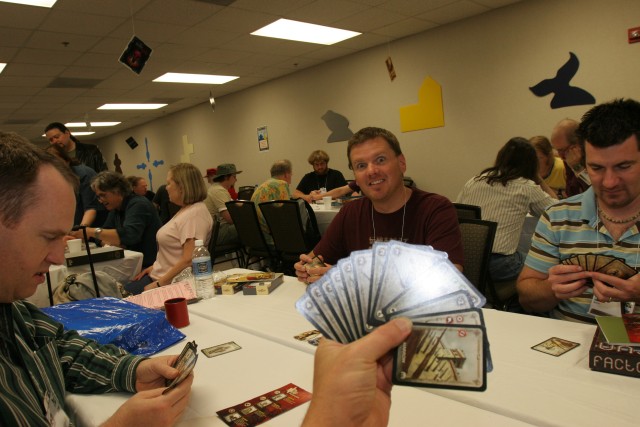
Iliad
Mike Chapel succumbed to call of new, shrink-wrapped games and bought one.
It was Iliad. Which was a card game about battles. What was amusing was
that Mike couldn’t handle the continued use of the term “her” where you
would normally use the sexist “his”.
The army cards represent units. And the units follow rock/paper/scissors
like rules. For example, the Archer defeats Chariots and Hoplites.
Ballista defeat Chariots and Elephants. Chariots defeat Archers and Hoplites.
Hoplites can form phalanxes where their total is the sum of the points times
the number of cards.
There are two types of rounds: Thanatos or Gorgons. For Thanatos rounds,
everyone plays cards until they pass. When you pass, you get the highest
ranking hero (from 4 down to 1). The person with the most units left on
the board (plus the hero) gets their choice of one of two victory cards.
The second place person gets the other. And the person who had the least
number will get the Thanatos card which contains a negative victory point
number. A Gorgon round is quicker in that, at the start of a person’s turn,
if they have the highest army, then they immediately win. They get one
victory card and the battle is over.
For our first Gorgon round, Jon essentially played a spoiler. I started out
with a hariot (a wall that stops chariots and has 0 value). Paul dropped out.
Mike played an elephant (x2 multiplier). Jon played an elephant. I played
a hoplite (valued 4). Mike played a hoplite on the elephant valued 3 (x2 = 6).
Jon put an archer on his elephant. Now it comes to my turn. If I play a
2 valued hoplite (4+3×2 = 6), then Mike will likely play another hoplite
on his elephant. Jon does something. I would go for more hoplites to get
my multiplier greater than Mike but then Jon would have no choice to use
that archer to stop me. This would give the victory to Mike since Jon’s
army value is so low. So, instead, I dropped out and gave the battle to
Mike. Sigh.
Tichu
We had 30 minutes to kill before we had to go and play the ultimate meaty
game of Texas De Brazil. So, Jon and myself taught newbies jridpath and John
Pastor the ultimate partner game of trick taking — Tichu. After explaining
the rules we played a couple of hands. The first hand was an uninteresting 50/50. But
on the second hand, in my first eight cards were two aces and the Dragon. So
I called Grand Tichu. In the next six were the Phoenix and my partner passed
me another Ace. Of course, the other team passed me the Dog. I had no trouble
making that hand. Hopefully, we planted the seed of Tichu in two new people.
